Arri Alexa vs. Canon C500 Camera Test – Part 2
Last week, we took you through a series of camera tests that included Day ISO tests, Dynamic Day Exterior range tests, Back Light/Skin Tone tests and Fill Light ratio tests with the Canon C500 and Arri Alexa. This week we have a whole new round of testing for your review. Let’s get this PARTY started!
- Read In-Depth Camera Tests: ARRI Alexa vs Canon C500
IR Filtration
This test is to find the exact level of Neutral Density where a camera starts to become polluted with IR (Infrared). When you use high levels of ND to take your exposure down to an f stop that will deliver more cinematic depth of field, the sensor picks up on IR and that IR contaminates your image with a reddish-brown hue. This is very difficult to get out of your image even with the most powerful of color correction devices.
Each sensor has an IR filter but finding that IR filter’s breaking point is what this test is about. None of the camera manufacturers will readily disclose what their IR filter level is, so I compare this test to Indiana Jones’s expedition to find the Holy Grail.
Tiffen Neutral Density
We systematically did this test with Tiffen WW Straight ND filtration and quickly realized the limits of the Alexa’s IR filter. After a 1.2 ND, you really could see the IR pollution start to enter the blacks. What you are looking for is this reddish-brown contamination. Look to the trees behind our model, over each shoulder.
On the flip side, Canon has really mastered this IR filter technology with the effort devoted to the still photography arm of their company. So even with eight stops of ND added, there is no IR pollution evident in any of the blacks.
Let’s look at some screen grabs of the side by side where it is very apparent when the Alexa starts its IR pollution and where the Canon remains clean.
Latitude Test Interior
I love this test, but please be prepared — because it is a long one. In-depth testing is what it is all about in finding your digital sensor’s voice. I broke it into two parts, Over Exposing and Under Exposing, to give you time to digest the information.
Overexposing
We start with the Alexa with the key light matching the exposure on the camera. If the light was at a 4.0, then the camera’s exposure was set to a 4.0. We slowly open up the lens in one-third stop increments. The reason for this test is to see how the camera handles overexposure and whether it looks like video when it blows out or whether it looks like film. The Alexa across the board looked just like film. It overexposed so creamy and organically. I loved how this camera looked.
I thought the breaking point for the Alexa was at +4 and 1/3 stops. This is where the video clipping came in and it looked digital. It lost its filmic/organic look.
With the C500, this overexposing did not look organic or feel like film. At +2 and 1/3 stops overexposed, the faces of our models started to clip in a very digital way. It was not creamy. I felt this was one of the biggest limitations of this camera.
To conclude on this part of the test, the Alexa has 14 stops of latitude and the C500 has 12. The Alexa held the highlights two stops more than the C500.
Underexposing
I do the underexposing part of this test because I feel that digital sensors look better when they are starved of light. I used this technique with film and underexposed most of my Kodak stocks -2/3 of a stop. When you start underexposing the image, it feels more filmic, to my taste. So with our Alexa, I felt that -2/3 to -1 stops looked really good as a base exposure. When I shot Need for Speed, I did the same.
With the C500, I found -2/3 to -1 stops underexposed was the right recipe as well. Both sensors acted very similarly in the under-exposing tests. This exposure approach brought about a more organic and filmic nature.
Now, here is the side-by-side of these.
Night ISO Tests
The Night ISO test was essential with all the night work on Need for Speed. I needed to be able to see how the digital sensors delivered the night. Looking at both cameras, the Alexa delivered a fairly balanced image with good skin tones and color. The night colors seemed to render in a very neutral way. The director, Scott Waugh, and I noticed right off the bat that the C500 came up right in the pocket that we had envisioned our nights should look.
Results
We wanted that warm golden glow of the sodium vapor street lights that would become a character in all of the night races and chases. The C500 also seemed to energize the colors in the background. The subtle tones that were very neutral and mundane on the Arri Alexa flew off the screen on the C500.
I feel that we could have dialed this look in on the Alexa fairly easily, but I knew from our skin tone test last week that some of the subtle color gradients that we were seeing in the background would be lost on the Alexa and both Scotty and I did not want that. The nights had to feel unique and contemporary. Our style of shooting was a throwback to the 70s, but we did not want our look to do so as well.
Noise Levels
The other thing that we noticed was noise levels. On the 60’ screen, we matched the noise levels on the Arri Alexa at 1250 ISO to the noise levels of the C500 at 4000 ISO. What a big difference. That is another two stops for you to work with at night, which could enable a 500mm long lens or 120fps without changing any light levels or having to light to that level. This was the power that Scotty and I quickly realized.
Imagine shooting with the available lights on the street, actually taking them down a notch because they were too bright, along with turning some off because we wanted a little more contrast. With all this, we still had enough light and ISO range to shoot 120fps. This was a game changer for us because it flipped the rules. Never before were you able to do this with available streetlights? The ISO range that we felt comfortable with on the Arri Alexa was 1250 and with the C500 our extreme edge ISO for a couple of shots would be 4000 ISO. These became our rules not to break.
Comparison
Our comfort zone on the C500 would fall more in the 1600-2500 ISO because at 24fps, the night street balance of all the available lighting looked good there. We knew we could go there for a whole scene, not just a shot or two at 4000 ISO. I did shoot a whole sequence at 4000 ISO, the Drive-In sequence in the movie. Be sure to check this out when the film is released in March of 2014.
Let’s look at the side by side here.
Night Driving Test
I knew that we would be doing a ton of shots inside the cars with our actors physically driving and I wanted to make sure that by just adding a little dashboard fill light I could literally drive down our race route and not have to add a light. We tested the Arri Alexa in this configuration and noticed right away the physicality of the camera’s size was incredibly limiting. Yes, we had an Alexa M body ready to go, but I knew we could not afford more than one.
Results
The Alexa seemed a little ruddy in the blacks. Ruddy is a term I use for a dirtiness in the blacks that is hard to get out. When the C500 came on the screen, it seemed to see all the colors in a much brighter and more vibrant way. It energized the background.
Scotty loved this because he knew the way to sell speed at night is to actually see something moving by in the background on the sides of your frame. I knew that our schedule and budget were incredibly tight, which meant we needed to take advantage of as much lighting as the city of Macon, Georgia could provide us. We made the C500 our go-to night camera based on these tests. It gave Scotty the freedom to have our actors drive without any lights out on the hood that would block their vision. This enabled us to link our actors with other actors driving as well.
Cinematography Insights
Because we did not have lights all around the car, I could have my camera operators looking out the front windshield and pan right back to our actors driving. These shots are usually done during the day because you lack the ability to pan because of the lights. We were able to light over three miles of night street racing with about 12 lights. YES! It is possible.
That was so great for our stunt drivers because they could really go at it and get the cars cranking through turns and not worry about running out of lighting real estate. This style of shooting action sequences as a play, as we did on Act of Valor with the SEALs hitting a target, was the right recipe again to put you, the audience, in the driver seat at speeds over 180mph.
In an upcoming post, we will take these two camera systems through action and speed photography and how each one handles this.
I would love to hear your comments on all of this. Please chime in with your thoughts and opinions because it is more beneficial for everyone in the education process. I take the time to answer every comment, so you are talking directly to me.
Buy the Canon C500:
Buy the Arri Alexa:
Visit Vimeo to watch these videos in 1080p.
Schedule 1-on-1 Video Call with Shane Hurlbut, ASC
Looking for mentorship in the film industry? Schedule a 1-on-1 meeting with Shane Hurlbut, ASC today! This is where you can get expert advice from an industry professional on your career or a particular project.
About Filmmakers Academy Cinematographer Mentor Shane Hurlbut, ASC
Director of photography Shane Hurlbut, ASC works at the forefront of cinema. He’s a storyteller, innovator, and discerning collaborator, who brings more than three decades of experience to his art. He is a member of the American Society of Cinematographers, the International Cinematographers Guild/Local 600, and The Academy of Motion Picture Arts and Sciences.
Hurlbut frequently joins forces with great directors: McG’s Netflix Rim of the World and The Babysitter, plus Warner Bros. We Are Marshall and Terminator: Salvation; Scott Waugh’s Need for Speed and Act of Valor; and Gabriele Muccino’s There Is No Place Like Home and Fathers and Daughters. His additional film credits include Semi-Pro; The Greatest Game Ever Played; Into the Blue; Mr 3000; Drumline; 11:14, which earned Hurlbut a DVDX nomination; and The Skulls. Notably, his television credits include the first season of AMC’s Into the Badlands.





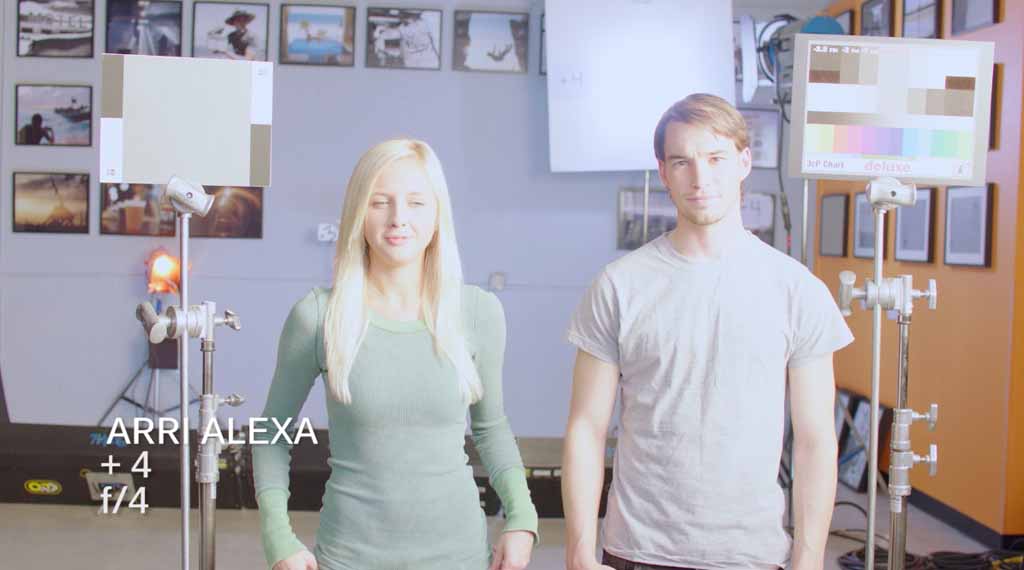
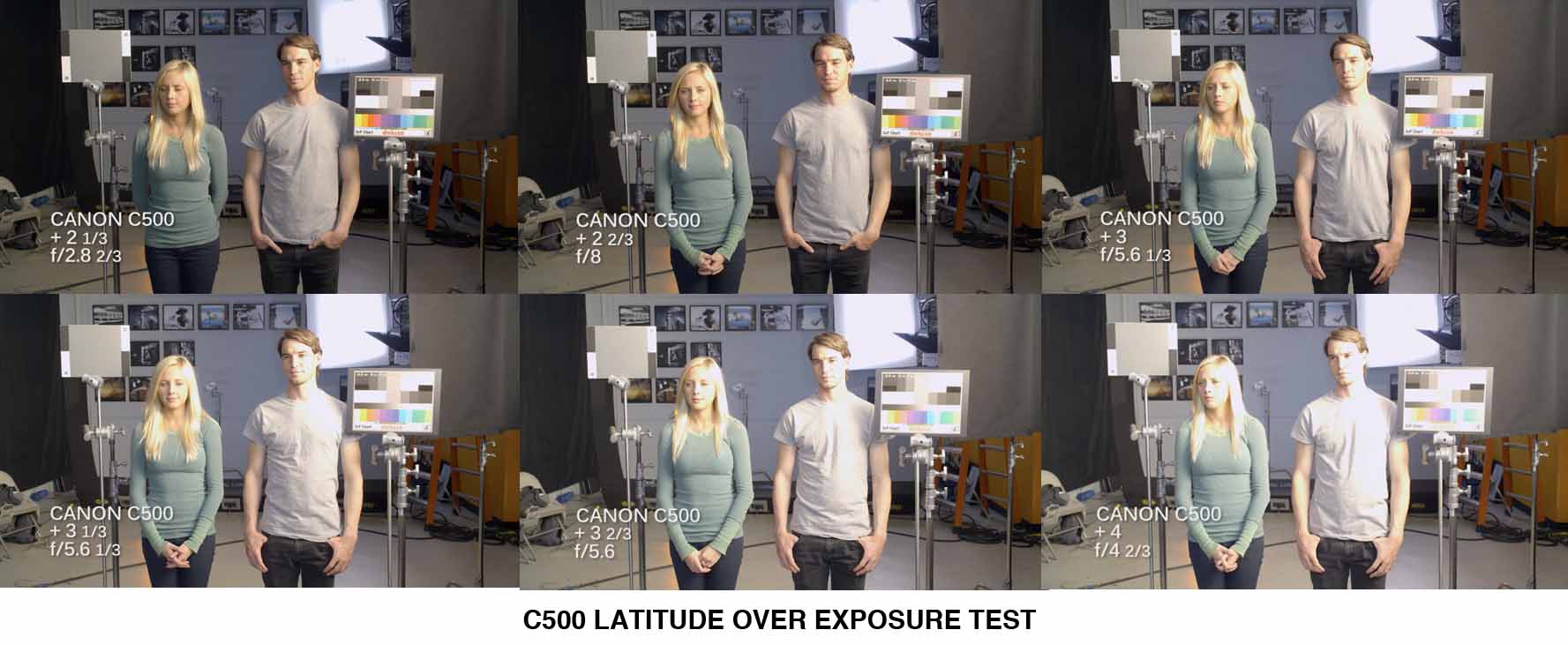





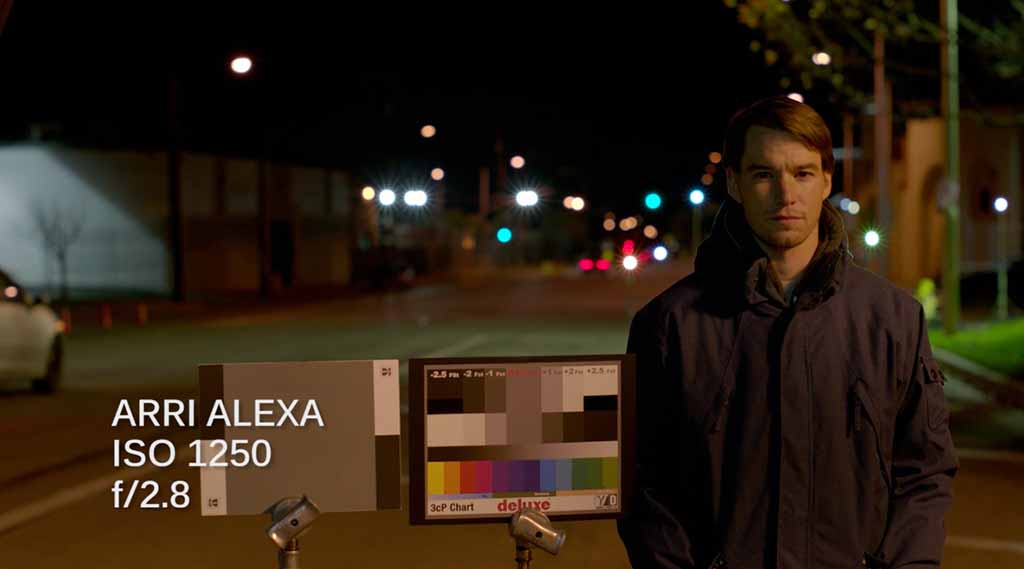
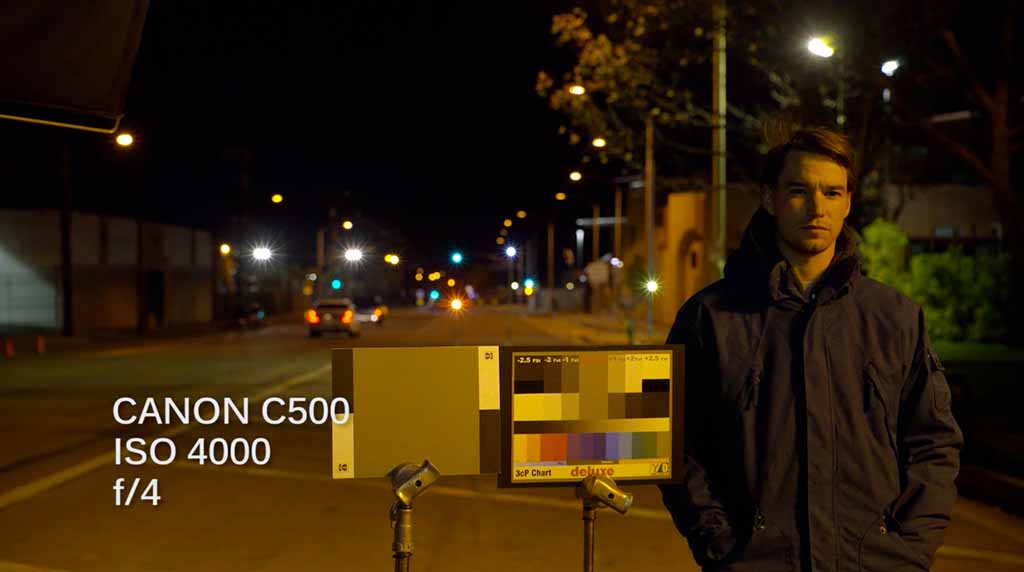






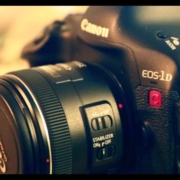



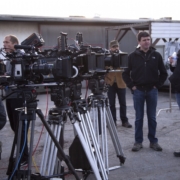
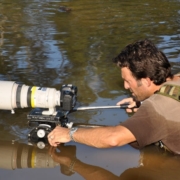


HiShane, great articles, what is the dynamic range of the good old 5dmk2 in your view? ,thanks.
rod hardinge, with a Leica lens, 10 stops
Great series of tests, Shane. Love seeing how two ‘dissimilar’ cameras can be used on the same project.
The C500 night shots look a world apart.
Sareesh Sudhakaran, thank you for your kind words, it is about finding what each sensor does best and then exploit it.
Hi Shane,
We met at Masters in Motion in 2012. We were watching Deadfall trailer on my iphone together. Anyways, my question is about the underexposure test. I shoot with BlackMagic, that is very similar to Alexa, and found out that I want to overexpose everything by 1.5 stops to get the cleanest image. I was surprised that you would rather underexpose your cameras. Wouldn’t be better to shoot at the cleanest exposure and then dial it down to the correct exposure in the post? RAW can handle that.
David Ruzicka, it is to each his or her own. I like when the sensor has to work for it. Feels more organic, much more filmic.
VERY interesting stuff, Shane. I particularly thought it was as interesting tidbit about the underexposing “sweet spots” for the cameras.
James, thank you. Exposing the camera normal make it feel like video I feel.
hi Shane, this is an excellent test series, thanks for putting it out there. I’m about to shoot a Tv movie with Alexa and a C300, i’m familiar with both cameras but very helpful to see you clearly illustrate the benefits of each sensor for day or night shooting… i may re-evaluate the camera choice to shoot our night street sequences. Cheers
Toby Oliver ACS, Glad I could be of help. Thank you for your kind words
Hey Shane, thanks so much for this – very interesting reading. I currently own a C300, but have an order on the Arri Amira and my only reservation in trading in the C300 will be the loss of the AMAZING lowlight performance it possesses.
Can I ask what gamma curve you were using with each camera? I know you often mention how the C500 has more “pop” in a lot of the test shots, but is this an image that’s been through a codex box and graded, or a look you have created in camera? Ditto with the Alexa, an ungraded raw image?
Thanks and keep em coming please! So informative…
Cheers from London.
Mark Warmington, a Rec. 709 LUT was put on all of these images, just to take the flatness out of the files. The C500 was shot RAW 4K thru a Codex S Recorder on picture CP profile. Arri Alexa was shot in 2.8K RAW C-log space on a S Recorder.
Hi Shane,
Is there a reason you guys used a custom CP profile out of the C500 instead log gamma? Doesn’t using a CP put the C500 at a disadvantage in the highlight range giving you that video feel you describe in the over exposure section? During your color correction stage, was the Rec 709 LUT baked into the image before grading, or was it simply used as a viewing LUT during grading? Thanks!
PS: Just want to say your tests are very informative, really appreciate that you share your knowledge.
Manuel Reta, the profile for Canon Log and it’s RAW file source is CP locked. There version of RAW is not like the Epic, Alexa, or F65. It retains much more color data. I feel that it is not technically a RAW format but it grades far faster than all others and seems to pick up on subtle colors like film and energize them. It is more limiting than the others but that is why we are cinematographers right. To get it right without all the added latitude. That’s the way I look at it. Thanks for all the support and kind words.
Thanks for clarifying Shane. I do seem to gravitate to the Canon colors and skin tones, they definitely get that right with their color science, (barring that slight orange shift to the reds if left uncalibrated). Since its inception RED has always felt a little magenta in capturing skin for me (just my take).
Yes, for DPs I feel it’s best to go with an intention & make a choice during filming, rather than leave it bland and vanilla to be decided upon later…allowing for all options in post pulls out some emotion to me. Sometimes a window needs to blow out to convey a mood feeling, other times grain is okay. Transitioning to these amazing digital cameras seems to be an exercise in avoiding the clinical.
Manuel Reta, I could not agree more and thank you for your comment and sharing with all of us. I try to shoot digital like I shoot film, no LUT’s, no black tents, no engineers, no waveforms. I am right there with the director, next to the actors, intimate and I think this style shows in everything I do.
Hey Shane-
I’m curious to know what type of lenses you were using for these tests? Thanks so much!
Clyde Harrelson, Panavision Primos
Shane, excellent article. Very informative.
Love the colors and the look in the trailer, Need for Speed. For those who have not checked out the trailer. http://www.youtube.com/watch?v=u3wtVI-aJuw
Anyone who likes to read info on a movie, check out http://www.imdb.com/title/tt2369135/ .
I look forward to seeing this movie. Shane’s work always is top notch. Seeing the C500 and Alexa footage will add to the viewing experience for this upcoming movie. Cheers.
Ron, thank you so much for all your kind words, comments and support of our blog over the years. I cannot wait to hear your feedback on Need for Speed
The education you provide us is worth more than film school. I go to film school, but I learn so much more here. loved hearing your thoughts about the images, and the technical aspects behind them through narration on your videos. Thank you!
Isaiah R, thank you so much for your kind words. That is what we are here for.
Couldn’t agree more with you. I did graduate from film school, but I tell everybody that you will learn much fester and more by just hanging out on set with pros and listening what they have to say. I admire DPs like Shane that share their knowledge with newbies. Thank you so much Shane for those two articles on Alexa/C500. Priceless information, very detail. Went through everything twice already. Love it. I’m gonna google you out Shane, I hope there is more similar material out there :)
Haha…I just realized you are running this website… Awesome!!!
Daniel Tkaczyk, ha ha Welcome to the HurlBlog, where you come to learn about filmmaking and cinematography not to be sold gear
Thanks for the comparison, Shane. We’re shooting a car spot later this month with night exteriors, driving around Manhattan. My colorist (@Co3) has a strong preference of Alexa over Epic for the way the blacks and reflections work on dark cars at night. Wondering how you feel Alexa vs C500 in this scenario, given it’s more about the car than skin tones (at least in the driving environments!). Also, I see that you and your director react very kindly to the colorspace the C500 gives you right off the truck – especially the color of head/tail/streetlights in the background. Playing devil’s advocate, if you were to correct the (very-warm) whites delivered with the C500 back to “white” (or at least in line with the Alexa), do the colors back there still hold up? Is there appreciable difference? Many thanks for your input and especially all of your posts.
Dan Appel, You are very welcome. The C500 OWNS THE NIGHT. Period. The Alexa is OK, you should never listen to what a colorist suggests, you are the DP. The color space of the C500 is far more advanced then the Alexa across the board. I have shot my last 5 car commercials and they were all at night and not one of them used the Alexa, the C500 rules, but I am also sick and tired of beating this drum. Listen to whoever you might want, I am just passing on my experience.
Tremendous article, tremendous test and also I loved the section of “IR”, I think Canon are very well designed to be a good leader and audiovisual brand development, besides being very versatile in size, despite much dependent plugins use, thanks for the very good data
Douglas Mor, you are very welcome and thank you for the kind words and supporting our blog.
Hi!!! Shane
Several articles in your blog is very helpful for me. Nice to meet you
i got a question about Canon C500 vs Arri Alexa Latitude Over Exposure Test linked video.
When i saw that video in vimeo, it has arri alexa +0 f/11 1/3 nd.3 subtitle and same one in you tube has arri alexa +0 f/8 nd 1.2, which one is right on exposure?
i mean that, what did you use for key light? aperture 8 or 11 and one thirds ?
Thank you for your comment Christopher, the correct exposure is f8 with an ND 1.2.
Tyler
I LOVED reading this. I was so close to winning an eBay bid to get a C500. Alas….
Have you been able to use an AJA Cion, Shane? They seem to suffer from poor dynamic range, but I love that they can shoot right out of the box (a must for a beginner like myself). I don’t mind the small sensor, but I was just curious if you thought it had potential (in other ways) to be more than a studio production camera. Thank you!!!!